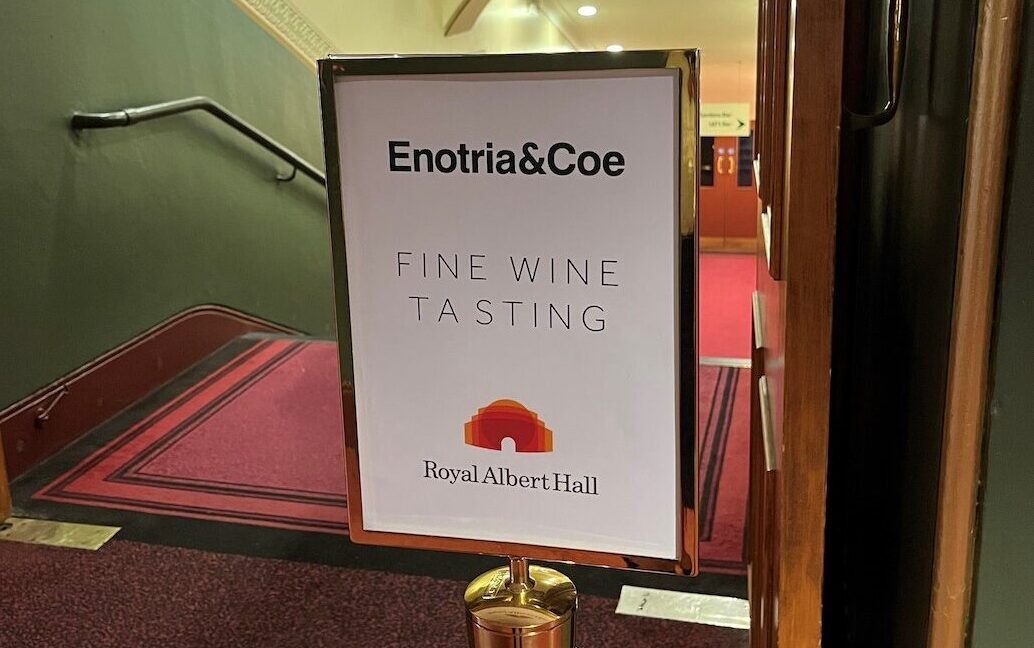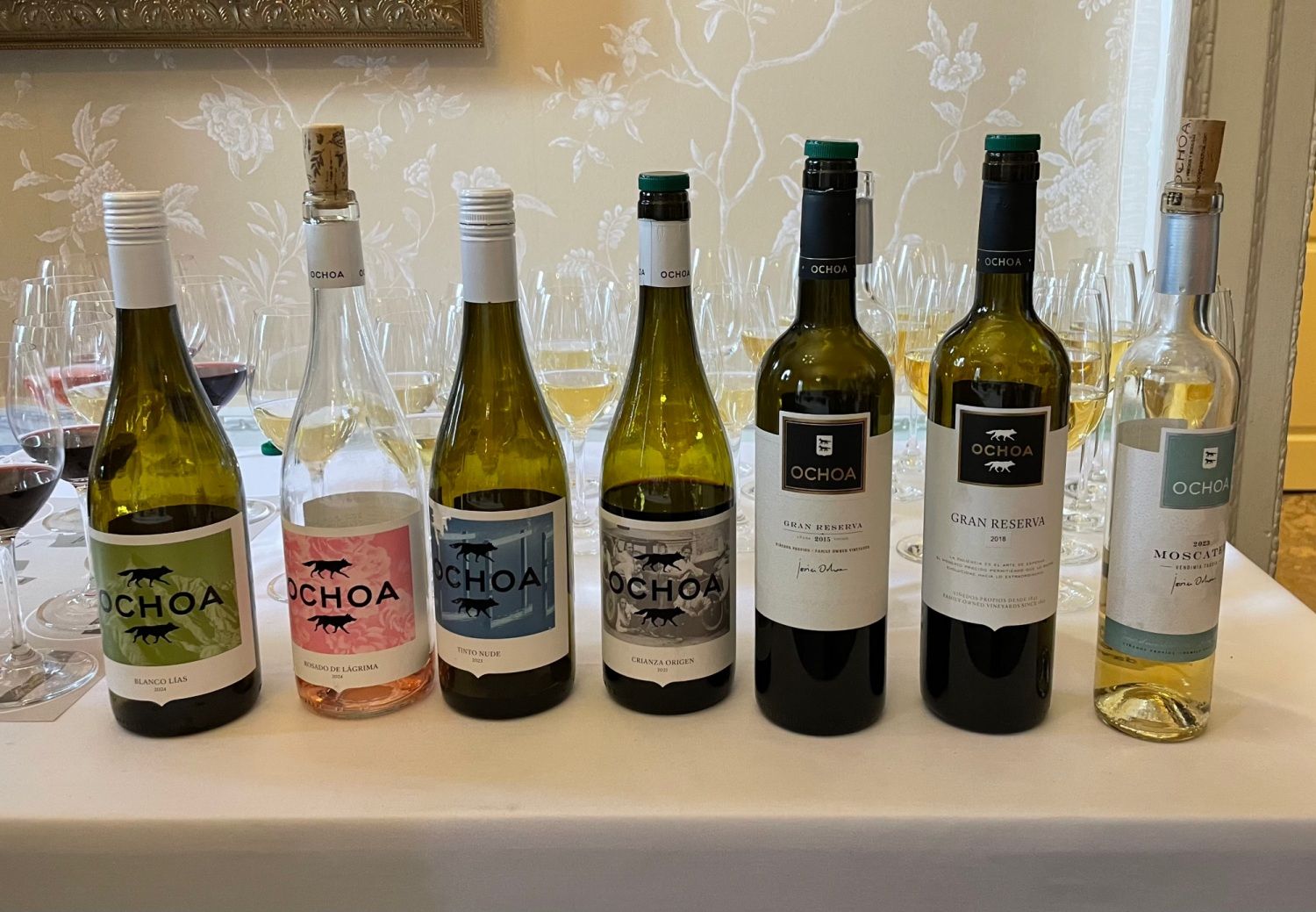Welcome to the Enotria&Coe fold: Arnaldo Caprai (Umbria, Italy), Donato D’Angelo (Basilicata, Italy), Marco Felluga (Friuli-Venezia Giulia, Italy), Serra Ferdinandea (Sicily, Italy), Domaine Sigalas (Santorini, Greece) and Rob Dolan from Australia’s Yarra Valley.

Enotria&Coe 50th anniversary tasting, Royal Albert Hall, October 3, 2022
When I received my invite to the Enotria&Coe 50th Anniversary Tasting, I twigged that this would not be an ordinary event.
For one, it was being held in two of the arena bars at the Albert Hall, something of a first – for me at least – as a venue (but actually one which worked well, with a well-dressed crowd suggesting the sense of occasion this place is accustomed to).
Second, the good folk at E&C were pitching this as a charity event with all proceeds from ticket sales going to the Red Cross Ukraine Crisis Appeal, actually a pretty wonderful idea.
And finally, there’s that 50th anniversary: a lot’s changed since founder Remo Nardone set up an Italy-focused wine importing business against a background of rising global tensions, strikes, political uncertainty and rising inflation. OK, plus ca change as far as the geopolitical backdrop is concerned, but E&C’s portfolio is today one of the trade’s most extensive and quality-focused, with Italy remaining key but top producers from elsewhere being taken on all the time, including recently Domaine Sigalas from Santorini and from Australia, Wynns Coonawarra and Victoria’s Rob Dolan.
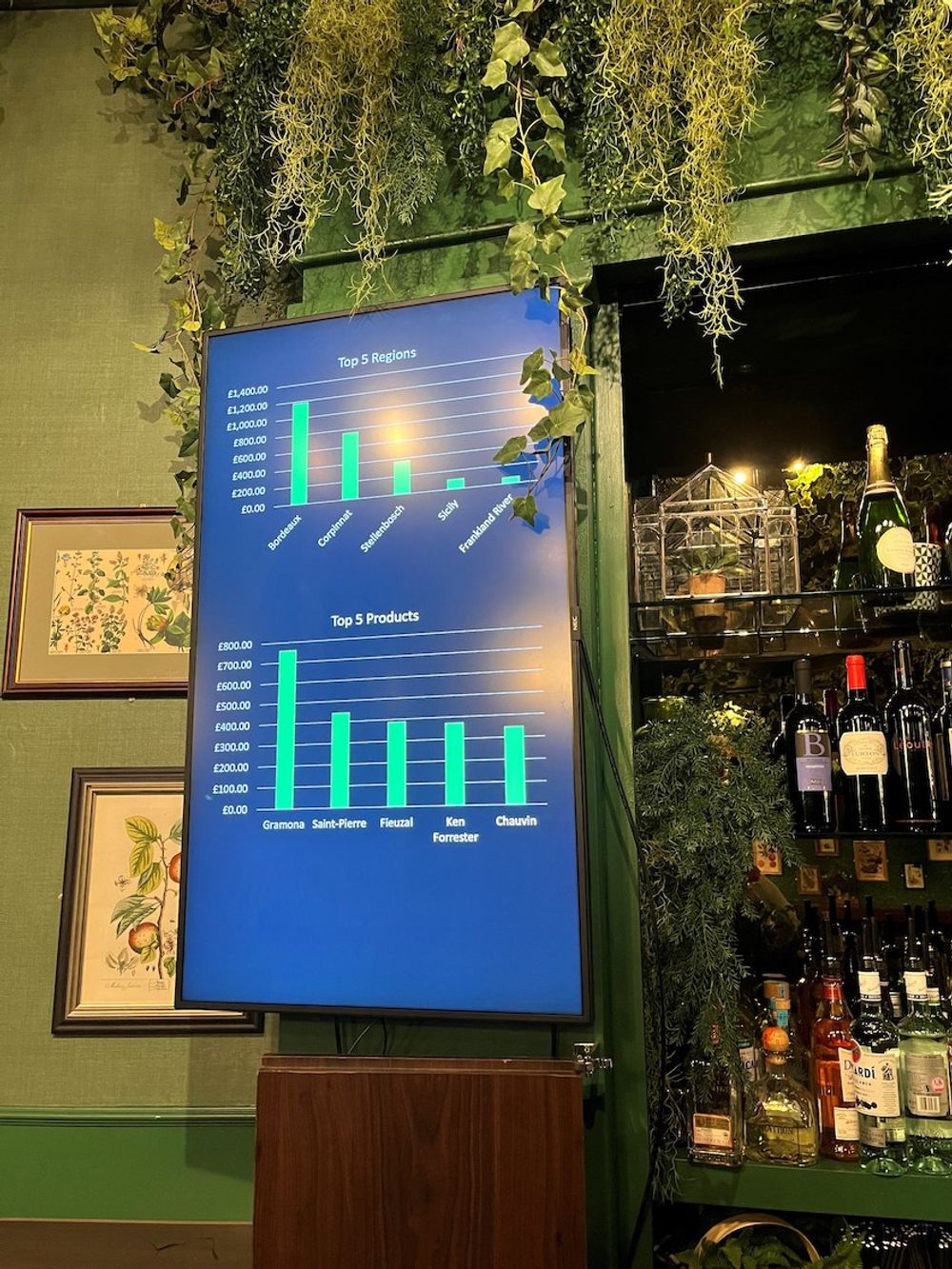
Nice touch: the top selling regions and estates relayed in real time at the venue
Speaking after the event had wrapped, E&C’s managing director Ants Rixon was clearly pleased with the event’s success.
“We are incredibly happy that the tasting was such an appropriate celebration. It tied together elements of our history with symbols of how we stay ahead of the curve through continuous innovation. The tasting featured incredible agency wines from some of our long-standing and revered producers, such as Planeta, E. Pira, Fattoria dei Barbi, Armagnac Castarède, Trimbach and Drouhin, alongside iconic fine wines like Château Haut-Brion, Château Lynch-Bages, Vega Sicilia and Opus One,” said Rixon.
“Plus it showed precisely what we are all about: bringing together the leading lights of the UK’s hospitality scene through memorable experiences, with thoughtful application of technology and, of course, outstanding wines.”

So what were my favourite wines at the Enotria&Coe tasting?
This was inevitably something of a greatest hits tasting with most of E&C’s best known agencies present and correct, as Rixon pointed out. But this being a 50th birthday bash and a charity event to boot, some really iconic wines from these and other producers were on show (at least they were if you could muscle through the crowd).
Unsurprisingly the tables showing Chateau Haut-Brion’s Grand Cru Classe Pessac-Leognan 2011 (at a cool list price of £450 a bottle), Vega Sicilia’s Unico Gran Reserva 2012 (£300) and Vinedos Santa Cantabria Magico and CV 88 (respectively, £336.50 and £656.52) were heaving.
There was so much here to take in that I had to be judicious, not an easy task, but it was fun to see how sales of these wines were doing from the screens that E&C had put up in both rooms: Stag’s Leap from Napa and surprisingly to me, the high-end non-Cava Gramona Enoteca 2006 from Catalonia were amongst the biggest sellers by the time I left.
Here are my top wines from the many on show, plus a look at the new agencies which have just joined Enotria&Coe.

Planeta Didacus Bianco 2019. The iconic producer may increasingly be focusing on native varieties but the signature Chardonnay is still one of the best on the market, perfectly balanced and harmonious and showing great complexity, despite its relative youth. Joyful.
Napa shone well as this event with Stag’s Leap Cellars Cask 23 Cabernet Sauvignon 2014 and the equally iconic Mondavi-Rothschild Opus One 2018 both almost jumping out of the bottle. The Stag’s Leap was wonderfully rich with dark and red berry fruit on a long, long palate whilst Opus One – from one of Napa’s best recent vintages – was about as close to perfect as perfect can be.
Gorgona Bianco 2020 Costa Toscana IGT. I’d heard of this wine – made by prisoners on the island of Gorgona, off the Tuscan coast from native grapes Vermintino and Ansonica, but hadn’t associated it with Frescobaldi until tasting it here for the first time. But wow: light apricot and peach flavours with a nice salinity running through the entire length of the wine, this was my favourite wine of the tasting – and not just mine: it was all gone when I returned for a later re-taste. I’d happily do a reverse Papillon and escape out to Gorgona to try it again, along with its red counterpart, sadly not part of Frescobaldi’s impressive line-up here.
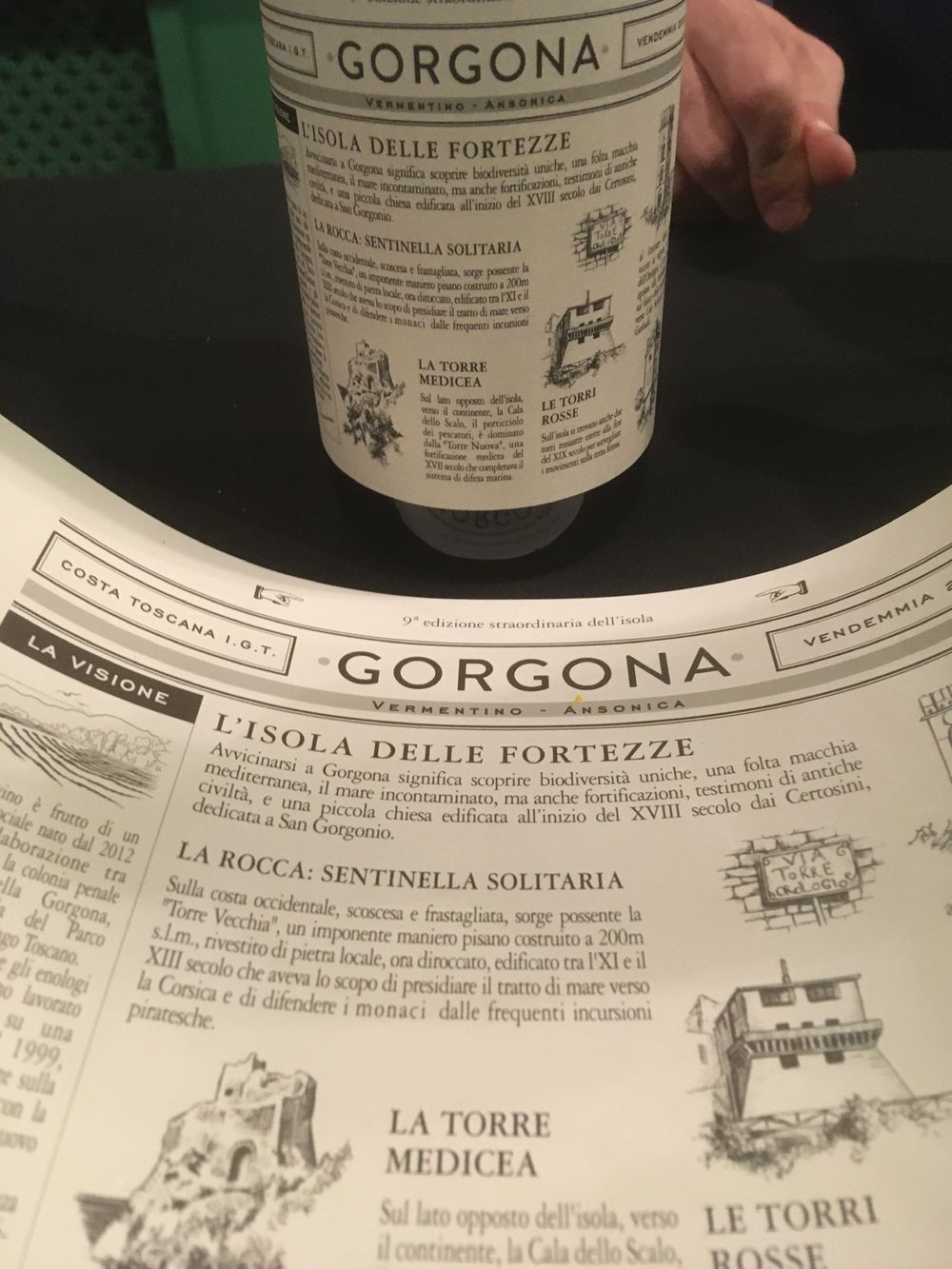
Il Chiosso Gatinara Galizja 2013. A wonderful Nebbiolo from the Gatinara DOCG, rich, gamey, moreish, with tobacco and forest ash on the palate.
Impressive though all these were, this really was Spain’s day with some of the best producers showing fantastically. A real treat that included:
Gramona Enoteca 2006. I’ve heard a lot about the high end Cava producers who have left the appellation but this delicious blend of Macabeu and Xarel-lo aged on the lees for 171 months (yep, that’s not a misprint) from Corpinnat takes some beating; really impressive, nuanced stuff that frankly fully justifies its £180 price-tag.
The Alma Carraovejas group fielded a great range from its different regions including from Ribera del Duero, the impressive, sturdy single vineyard flagship Cuesta de las Liebres 2018, pretty much everything you’d want a great wine from this ever-improving region to be; the white Emilio Rojo from Ribeiro is a blend of six varieties, and what a wonder it is, with marzipan, peach and white floral notes. Wonderfully textured.
Likewise, the fascinating multi-blend Abadia Retuerta Aniversario X 2006 from just outside the Ribera DOC, Sardon de Duero where winemaker Pascal Delbeck has created an impressive vineyard system comprising 54 plots each planted with a different variety creating a delicious, really nuanced wine.
And finally, to one of the show-stoppers – Teso La Monja’s En Primeur Toro 2018, one of Spain’s rarest and priciest wines (around £950 a bottle), made by the Rioja-based Sierra Cantabria winery. I found this quite delicious, reflecting the complexity that comes from 160-year-old ungrafted, pre-phylloxera vines and ingenious fermentation and ageing.
“This is rare and just exceptionally well made. Very limited (this is bottle 195 out of 800) and well-packaged, it really appeals to our core customer base. We’ve sold our entire allocation today,” says Mateusz Kowalczyk, E&C’s business development manager.
Job well done then – and on an exceptional and memorable tasting.
So which were the new agencies shown at the tasting?
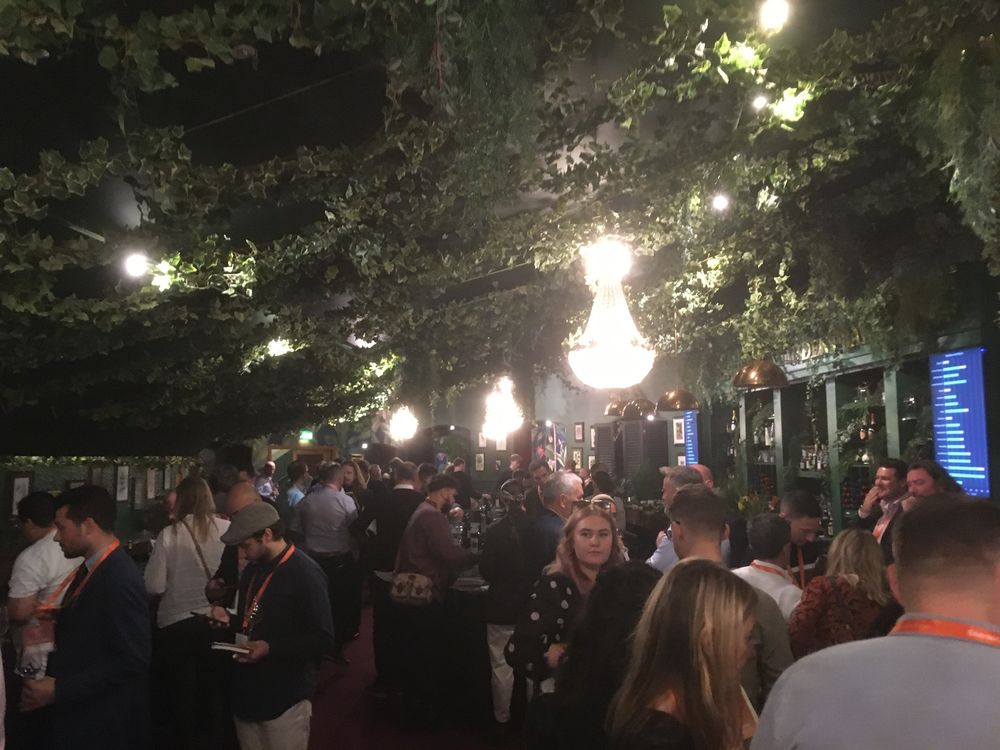
Arnaldo Caprai (Umbria, Italy)
Arnaldo Caprai celebrated its 50th anniversary last year during which it has become one of the most respected and sustainable producers in the Montefalco region. Showing at the tasting, the 25 Anni Sagrantino 2009 is an absolute stunner, almost certainly the best Sagrantino I’ve tasted. There’s a lot of complexity here with layers of dark berry and morello cherry supported by warm tannins and controlled acidity – just 14.5% abv too, this has another 10 years ahead of it.
Its more down-to-earth younger brother, Collepiano Montefalco Sagrantino 2018 was a great example of Umbria’s best-known variety, well balanced with good acidity and, most importantly, controlled tannins in a surprisingly fruit-driven wine that really doesn’t show its 15.5% abv.
I didn’t really get on with Caprai’s Grecante 2021, a DOC wine from the Colli Martani made from Grechetto, a local Umbrian variety often blended with other grapes. Lots of minerality here, and lime and herbs on the palate, but lacked definition somehow. On the other hand, this is still pretty young and will evolve to show a fuller palate.
Donato D’Angelo (Basilicata, Italy)
The Aglianico del Vulture 2017 is pretty much everything you expect from this variety, surprisingly checking in at 13.5% abv (I’ve tasted Aglianico wines showing up to 15%). This felt more like a Nebbiolo with lots of complexity supported by soft tannins reflecting Vulture’s rich volcanic soil – this is rich and flavoursome and will evolve nicely. The Balconara IGT Rosso 2017 – a blend of Aglianico and Cabernet Sauvignon – was equally well balanced, with a long, elegant finish but also some power, reflected in its 14% abv alcohol.
Marco Felluga (Friuli-Venezia Giulia, Italy)

Shown at the tasting, the Col Disore Russiz Superiore 2013 is a field blend of Pinot Bianco, Fruliano, Ribolla Gialla and Sauvignon Blanc and boy, does it work well. This is small volume – just 5000 bottles – made sustainably from low-yield grapes grown in the best plots; some oak is evident along with balanced acidity but not obscuring the fruit impact of the wine, with a long finish suggesting this still has some years ahead of it. Great.
I also really enjoyed the more modestly priced Collio Pinot Bianco Russiz Superiore 2021, showing why this variety performs so well in this region. Light perfume on the nose, with plenty of white peach and apricot on the palate, this is very accomplished though also young, with a slightly sharp attack.
Acidity was also something of an issue with Marco Felluga’s Collio Cabernet Franc Russiz Superiore 2018, despite the wine having some age and I suspect some oak: green pepper notes sit alongside a mainly red fruit profile, which I wasn’t expecting (but then this is my first Collio Cab Franc). More time in bottle will I suspect, do wonders.
Serra Ferdinandea (Sicily, Italy)
This new boutique project of Planeta and Oddos of France has a fascinating backstory – the Monte Cirimi vineyards where grapes for the wines (a bianco, rosato and rosso) grow overlook the ocean where in 1831 an island called Ferdinandea emerged from the sea. This phenomenon almost prompted a conflict between the French, Italians and English – but all came to naught when the island soon sank back beneath the waves. All Serra Ferdinandea wines are in their first vintage. I only tried the white, a 50/50 blend of Grillo/Sauvignon Blanc, a wonderfully fresh citric blend of the two varieties, very fragrant and floral but with some ageing and a strong backbone of acidity. This will age beautifully.
Domaine Sigalas (Santorini, Greece)
One of the oldest and most iconic producers on volcanic Santorini, located in beautiful Oia, with views across to the caldera. Sigalas has a wonderful range and has been owned since 2020 by Stelios Boutaris of Kir-Yianni, that iconic Naoussa producer which is also represented by Enotria. The high end Kavalieros Assyrtiko 2020 was showing at the E&C tasting and was so impressive I kept returning for a re-taste. Single vineyard Santorini Assyrtiko is pretty rare which explains the price, but this has everything including wonderful salinity and complex Cycladic herbs on the palate – a real treat.
The Santorini 2021, a 100% Assyrtiko, has wonderful expression, nice salinity and, importantly, not excessive acidity with time spent in stainless steel giving good balance. From 60 year old vines, this is just great and well priced for a wine of this quality.
Sigalas’ Mavrotragano 2019 was remarkably complex and forceful (15%) for a wine of this age, showing lots of dark fruit but also figs and red plums on a mineral palate. There’s a long finish here which is great because it’s so very enjoyable. One for laying down… with.
Rob Dolan (Yarra Valley, Australia)
Not a producer I was familiar with, Dolan specialises in Burgundian varieties (but also increasingly alternative ones too) in Victoria’s Yarra Valley and does it very well on the basis of the two wines I tried. The White Label Chardonnay 2020 was just how a Chardonnay from Australia today should be, neither too oaky nor too lean and sharp, but showing lots of complexity on a well-balanced palate; the White Label Pinot Noir 2019 was medium weight, showing lots of red berry fruit, some herbs and a pleasantly smoky aftertaste.
